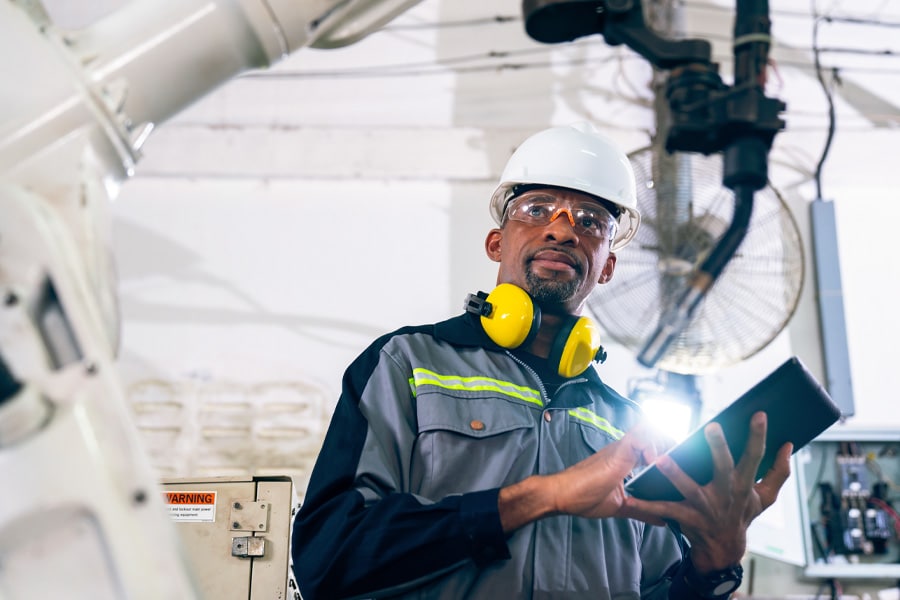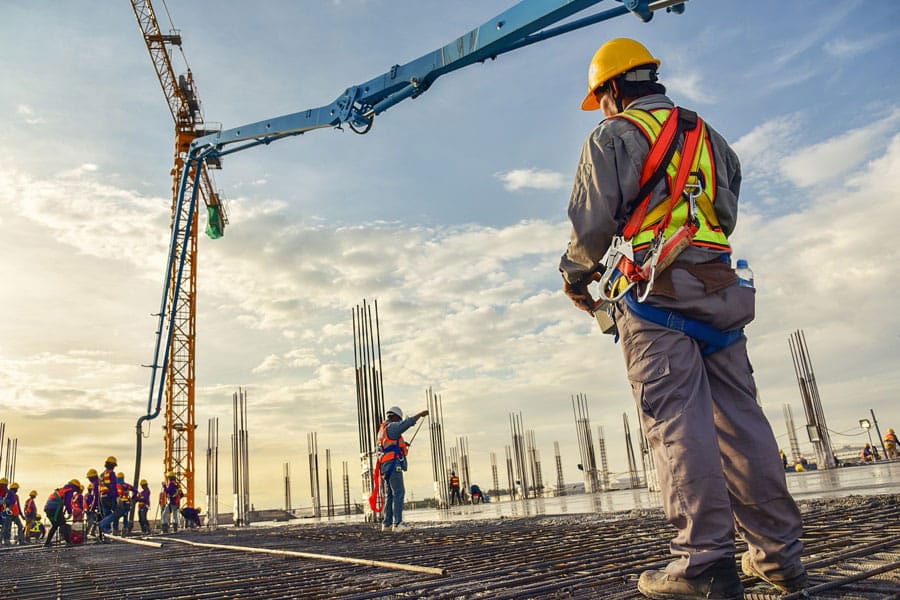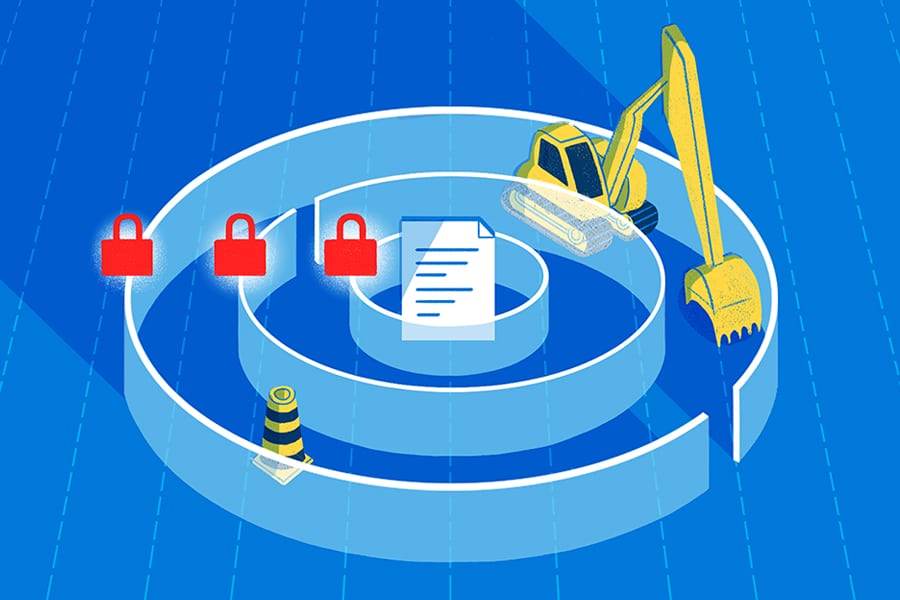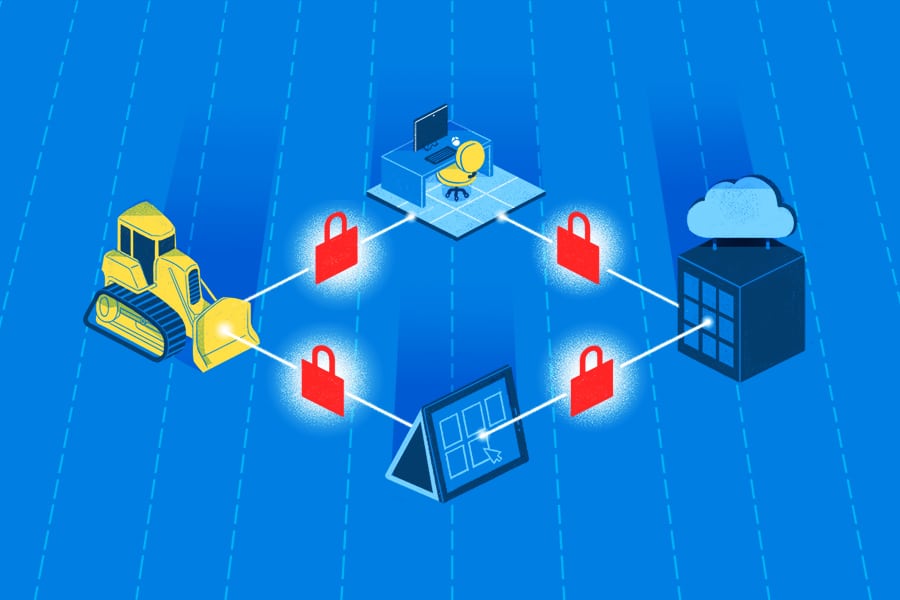Anyone who’s spent much time on a construction jobsite knows it can be a chaotic environment. Between heavy equipment, materials and people, staying on top of what’s happening at any given moment is a full-time job.
But recent innovations may make this chaos a thing of the past. Real-time construction monitoring technology, whereby sensors, laser scanning and other tools collect ongoing jobsite data, makes it possible for the leaders of any construction project to stay alert to exactly what’s happening at any given moment on a jobsite—and make the changes necessary to keep workers’ safety and productivity optimal.
Built spoke with Marko Radanovic, Building 4.0 CRC researcher and co-author of a recent paper about the possibilities of real-time monitoring on construction sites, about the state of this exciting new technology and the possibilities it may create for the jobsite of the future.
What is real-time construction monitoring?
Real-time construction monitoring, according to Radanovic, is a complex undertaking that involves awareness of multiple aspects of a jobsite’s environment. “My specialty is looking into how we can map the construction sites by localizing both people and equipment within the space,” he said. “This involves the classification of 3D data and collecting it into a comprehensive 3D positioning map.”
How is this data collected? Radanovic said two methods are currently widely used. “Laser scanning is quite popular, and photogrammetry, the use of depth cameras, is an alternate method,” Radanovic said. “In layman’s terms, you essentially either record a video or take photos and create the 3D model from that.”
Radanovic said these methods can be used in “a very automated way. The issue here is that creating a 3D model of something is easy; interpreting it isn’t.” His team was tasked with analyzing how this technology could effectively be used and determining the benefits of training advanced computers to do this kind of monitoring work.
The benefits of real-time construction monitoring
If perfecting real-time construction monitoring is so complex, why bother? The effort is worthwhile, according to Radanovic, because it could revolutionize how the construction industry conceptualizes and measures work on a jobsite.
“By digitizing the process as much as possible, you will get it to be more effective, more efficient,” Radanovic said. “This efficiency comes with increased speed, fewer interruptions and ultimately greater profits. You’re doing stuff faster, you’re doing stuff better, you’re doing stuff more efficiently.”
From the perspective of jobsite workers, real-time monitoring pays off in safety improvements for everyone—improvements that Radanovic said are reflected in the existing data.
“Safety can be greatly improved with the implementation of these technologies,” he said. “For example, some studies estimate that the incidents of injury caused by items and equipment falling on workers and causing injuries could be reduced by 30% to 60% by incorporating an automatic warning system that uses real-time construction monitoring technologies.”
Real-time construction monitoring in the real world
Real-time construction monitoring seems to be the wave of the future, but how are these technologies currently being used? That’s just what Radanovic and his colleagues set out to discover.
“We wanted to do a comprehensive review of real-time monitoring, looking at the sensors being used, positioning, techniques and applications,” he said. “We looked at the applications of how these sensors and techniques are used to do real-time 3D monitoring of construction sites, static construction sites, dynamic construction sites, monitoring workers and equipment and so on.”
So what did they discover? “There are so many methods out there, which are simple to use,” he said. “But our conclusion is that the main barrier to making these technologies practical while canceling out the disadvantages is data integration.”
Radanovic believes that the lack of data integration and standardization across the industry makes it difficult to realize the practical applications of these new technologies. “A full-scale construction site implementation doesn’t exist at this point,” he said. “This is because the technology isn’t integrated enough. It relies on small parts that are constantly being improved on, and really moving very rapidly. But what we need is standardization. Every company uses different software. Every company uses different databases. So there’s really no integration at that point, no standardization.”
The future of smart construction sites
Although the construction industry has a reputation for being slow to adopt new technology, Radanovic said he was pleasantly surprised to discover the rapid rate of progress in real-time construction monitoring technologies and implementation.
“Very interesting for me was the amount of progress that happened in the past two, three, four years,” he said. “What I’m most fascinated by is how deep machine learning methods are being used in different levels, in creation of models, in classification and segmentation, and then in making decisions, too.”
Radanovic said jobsite monitoring technologies are progressing at an exponential rate. “If you stop keeping up with real-time construction monitoring for just a short amount of time, you can turn around, and in just a few months the technology has progressed so rapidly you’ll be completely lost,” he said.
Still, for these technologies to be more widely and successfully used, the industry needs to find a way to bring them together in a more cohesive way.
“It’s one thing to gather the positions of workers and equipment,” Radanovic said. “But then, are you going to have a human looking at the data and then making conclusions, or do you really want to automate this process? It’s about integrating all of these different types of data, including the stage that the building is on, a model of the construction site that’s being evolved as the construction progresses. We need to understand where the materials are, what’s the schedule, all the other stuff, and then integrate this into one system.”
Radanovic believes that the biggest challenge facing construction innovators is discovering the best, most effective way to use these expanded data gathering capabilities. “How to actually use this data to make intelligent, better decisions is really an open research question,” he said. “That’s the biggest challenge.”
















